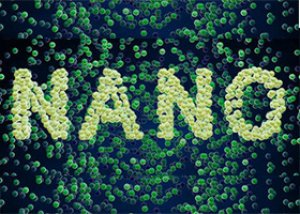
All iLive content is medically reviewed or fact checked to ensure as much factual accuracy as possible.
We have strict sourcing guidelines and only link to reputable media sites, academic research institutions and, whenever possible, medically peer reviewed studies. Note that the numbers in parentheses ([1], [2], etc.) are clickable links to these studies.
If you feel that any of our content is inaccurate, out-of-date, or otherwise questionable, please select it and press Ctrl + Enter.
Nanoparticles will come to the rescue for endometrial cancer
Last reviewed: 02.07.2025
 ">
">The possibilities of treating oncological diseases are expanding every year. However, the statistics are still disappointing: in every six patients with endometrial cancer, 1-2 cases end in death.
After conducting a new study, scientists told the medical community about a discovered method that will help cure endometrial cancer – nanotechnology will come to the rescue.
Experiments conducted on rodents by specialists from the School of Pharmacy at the American University of Iowa have shown that special nanoparticles carrying a drug are capable of destroying cancer cells.
Endometrial cancer develops from the endometrial cell structures that line the uterine cavity. The disease is also called " uterine body cancer." In about 10 out of 100 patients, the course of this disease is particularly aggressive - this type of endometrial cancer is called serous adenocarcinoma.
The same inexorable statistics state: more than 50% of cases of aggressive cancer are detected only after the pathology has spread to other tissues of the body. Approximately 40% of all deaths from endometrial cancer are caused by serous carcinoma.
The author of the project, Professor Ebeid, began his research with adenocarcinoma – fortunately, specialists were able to find the weak point of this terrible disease.
"We took on a truly challenging task - we needed to find all the possible weak points of a cancerous tumor. And we managed to conduct the first tests of a hyperselective drug aimed at combating adenocarcinoma: nanotechnology came to the rescue," the American scientists say.
The specific technology consists of a carefully thought-out delivery of the necessary medications using carriers such as nanoparticles.
The network of blood vessels in a cancerous tumor grows very quickly, because the tumor needs to provide itself with nutrition and oxygen. Professor Ebeid explains that due to such rapid growth, the tumor's vascular network is imperfect and differs from the usual one in its hyperpermeability. This allows nanoparticles to easily penetrate the pathological vessels, carrying the necessary medication with them.
Scientists “loaded” such chemotherapeutic drugs as Paclitexel and Nintedanib into nanoparticles, which were supposed to have an anti-cancer effect “from the inside.” These nanoparticles were injected into the rodents’ veins. The results were surprising: the cancer process decreased in size, and the life expectancy of the mice increased.
"We can say that we have discovered the vulnerability of serous adenocarcinoma - we managed to first weaken and then destroy the tumor using chemotherapy drugs. We used the term "synthetic lethal situation" - this is a situation in which adequate conditions are provided for the destruction of the tumor," the researchers say.
Many scientists support the enthusiasm of the study's authors, speaking about a real breakthrough in the treatment of aggressive endometrial cancer.
The study's author, Professor Ebeid, published information about the experiment in Nature Nanotechnology.

 [
[